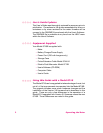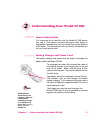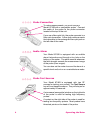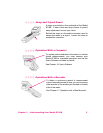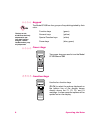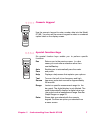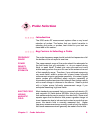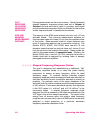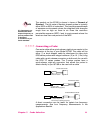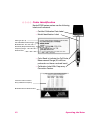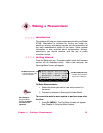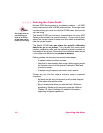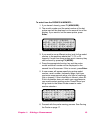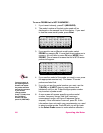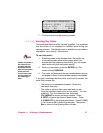
10 Operating the Meter
Flat response probes are the most common. Narda’s patented
shaped frequency response probes read out in Percent of
Standard and are particularly useful in complex, multi-signal
environments where exposure limits are different for the various
emitter frequencies and in classified environments.
The majority of the 8700 series probes have four-inch (10 cm)
diameter heads. The minimum measurement distance for
these probes is about 4 inches (10 cm) from the outside surface
of the probe. Measurements made at closer distances can
result in inaccurate readings due to capacitive coupling. The
Models 8721D, 8723D, and 8725D have two-inch (5 cm)
diameter heads that can be used as close as 2 inches (5 cm)
from the source to the outside of the probe. These probes are
ideal for the measurement of waveguide leaks. Similarly, the
Model 8781D has a one-inch (2.5 cm) diameter head with a
flexible shaft that is designed for locating leaks in densely
packaged microwave systems.
Shaped Frequency Response Probes
The goal in designing and manufacturing a traditional, “flat”
frequency response probe is to make the probe equally
responsive to energy at every frequency within its rated
frequency range. In contrast, Narda’s patented shaped
frequency response probes are designed and manufactured so
that their sensitivity mirrors a particular standard as closely as
possible. For example, many of the major standards in the
world set limits for maximum exposure at the lowest frequencies
of 100 mW/cm
2
. These same standards typically limit exposure
in the VHF region to 1 mW/cm
2
and to 5-10 mW/cm
2
in the
microwave region. A shaped frequency response probe
designed for such a standard is 100 times more sensitive in the
VHF region than at the lowest frequencies. The result is that
energy from all sources within the probe’s rated frequency
range are not only summed in terms of RMS power but are also
weighted in direct proportion to a particular standard's
frequency dependent exposure limits.
FLAT
RESPONSE
OR SHAPED
FREQUENCY
RESPONSE
SIZE AND
MINIMUM
MEASUREMENT
DISTANCE



